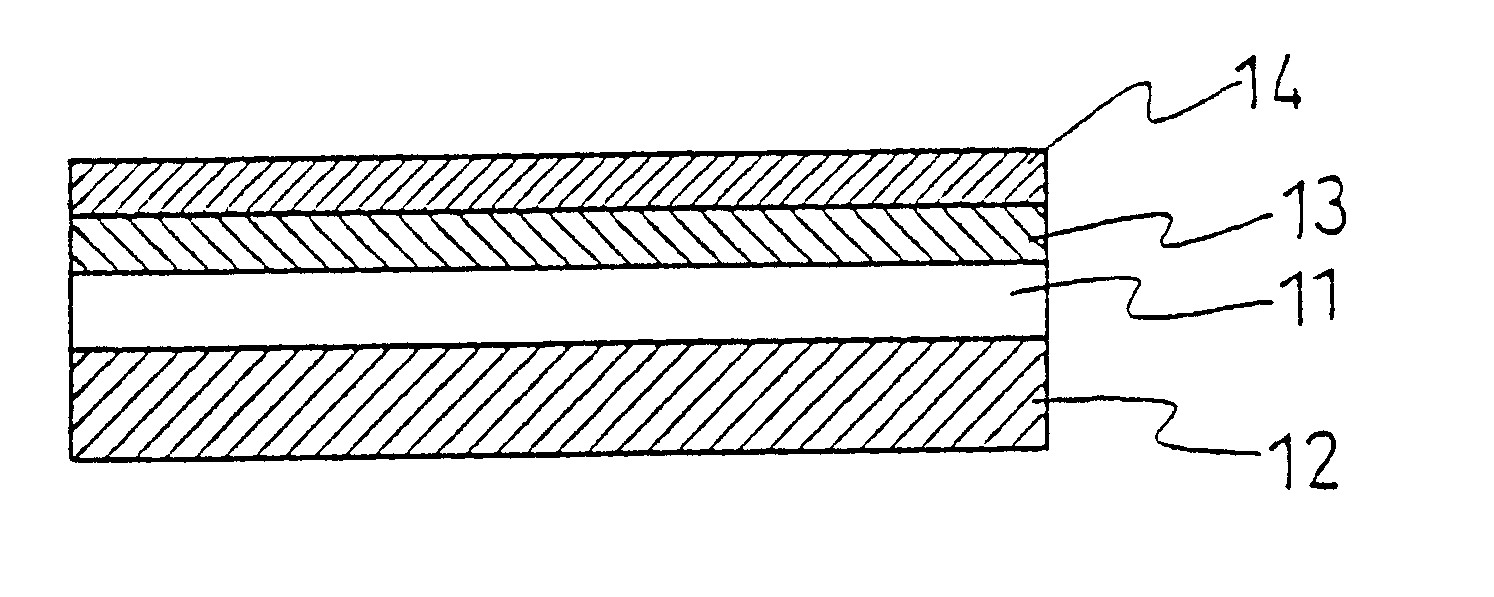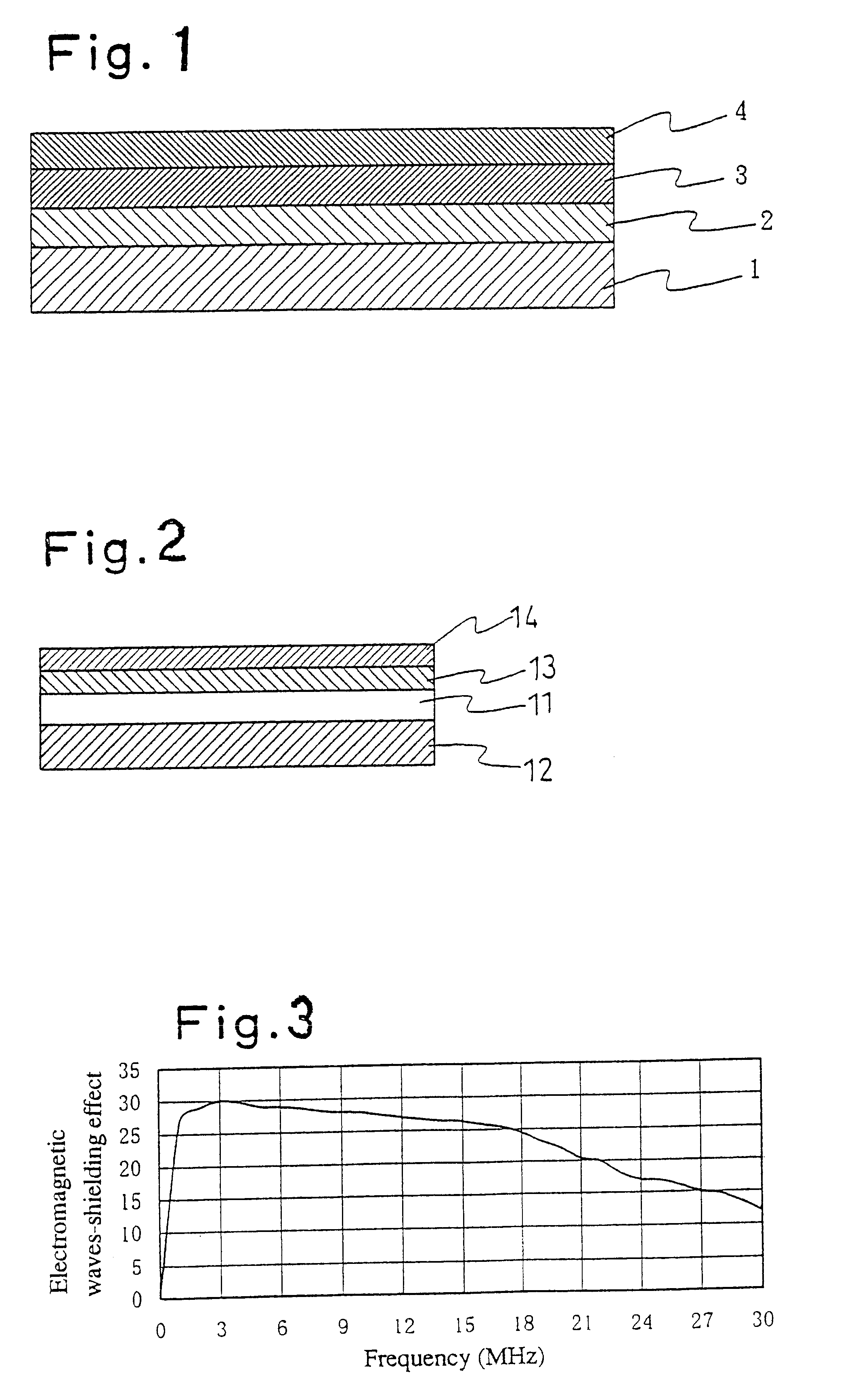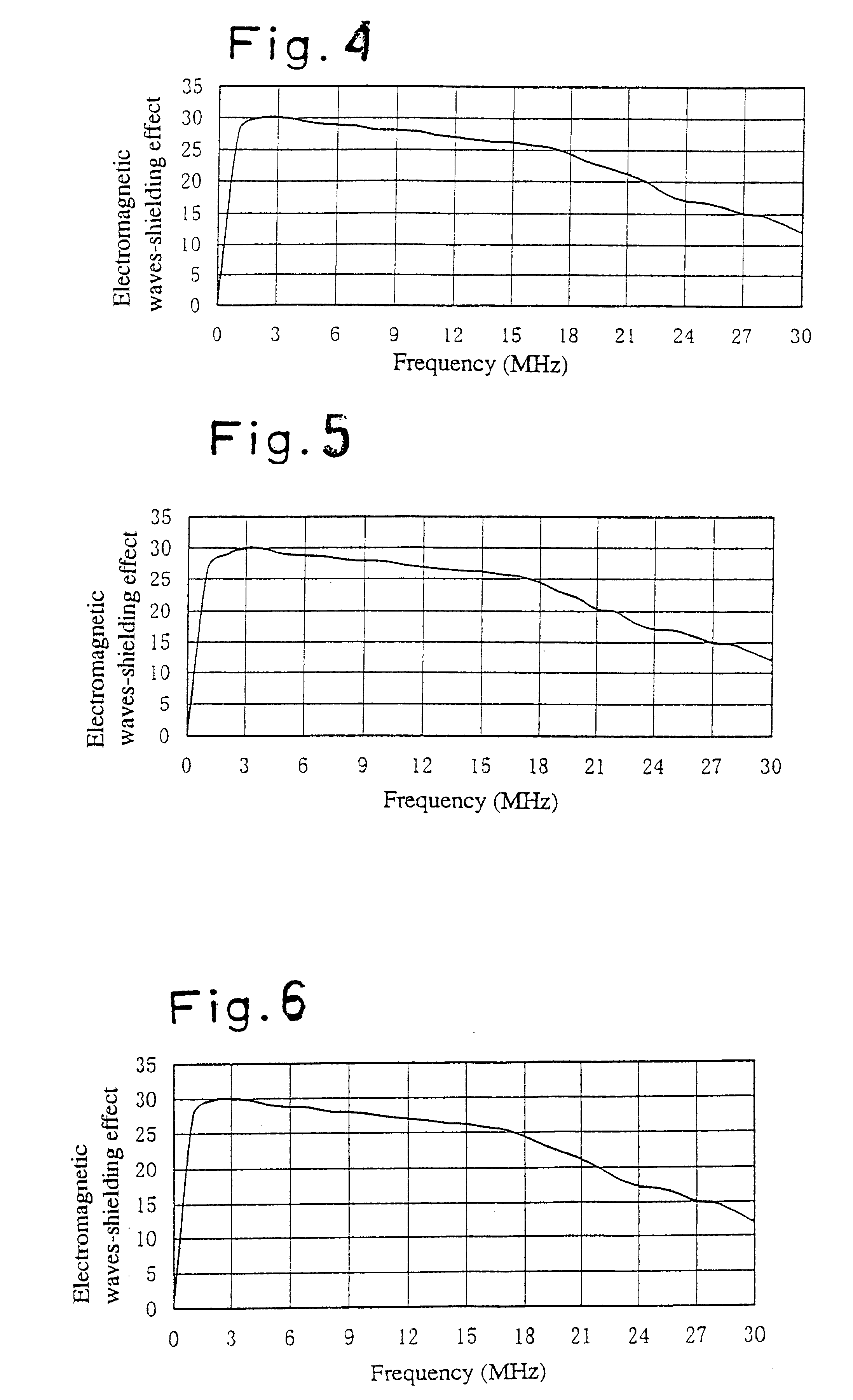Adhesive transparent resin and a composite including the same
a transparent resin and composite technology, applied in the direction of synthetic resin layered products, film/foil adhesives, sensing by electromagnetic radiation, etc., can solve the problems of increased danger, more serious accidents, and increased danger to the human body
- Summary
- Abstract
- Description
- Claims
- Application Information
AI Technical Summary
Benefits of technology
Problems solved by technology
Method used
Image
Examples
example 1
50.2 parts by weight of diallyl phthalate, 49.8 parts by weight of pentaerythritol tetra(3-mercaptopropionate) and 0.1 parts by weight of 1-hydroxycyclohexylphenylketone as a photopolymerization initiator are mixed with stirring for two hours in a dark to obtain an UV-curable composition. The obtained composition is spin-coated on a non-alkali glass plate having a thickness of 1 mm, and then irradiated with UV rays for 12 seconds at an irradiation dose of 1000 mW / cm2 to form a coating having a thickness of 1.5 .mu.m.
[0095]
The obtained coating had no unevenness of coating and no defect in the appearance, exhibited a light transmittance of 98% in a visible radiation area of 400 to 750 nm, and also showed a pencil scratch hardness of 2H. Further, the evaluation concerning adhesion to a glass place based on a cross cut test (JIS K-5400) indicated that no peeling is observed in the coating. These characteristics are not deteriorated after the coated glass plate is left to stand for 120 h...
example 2
The procedure of Example 1 is repeated to form a coating on each of the non-alkali glass plate and color filter with the proviso that diallyl isophthalate is used in place of diallyl ohthalate used as one component in the UV-curable composition. The results of evaluation test are substantially the same as those obtained in Example 1.
[0098]
example 3
The procedure of Example 1 is repeated to form a coating on each of the non-alkali glass plate and color filter with the proviso that diallyl terephthalate is used in place of diallyl phthalate used as one component in the UV-curable composition. The results of evaluation test are substantially the same as those obtained in Example 1.
[0099]
PUM
| Property | Measurement | Unit |
|---|---|---|
| thickness | aaaaa | aaaaa |
| thickness | aaaaa | aaaaa |
| thickness | aaaaa | aaaaa |
Abstract
Description
Claims
Application Information
 Login to View More
Login to View More - R&D
- Intellectual Property
- Life Sciences
- Materials
- Tech Scout
- Unparalleled Data Quality
- Higher Quality Content
- 60% Fewer Hallucinations
Browse by: Latest US Patents, China's latest patents, Technical Efficacy Thesaurus, Application Domain, Technology Topic, Popular Technical Reports.
© 2025 PatSnap. All rights reserved.Legal|Privacy policy|Modern Slavery Act Transparency Statement|Sitemap|About US| Contact US: help@patsnap.com



